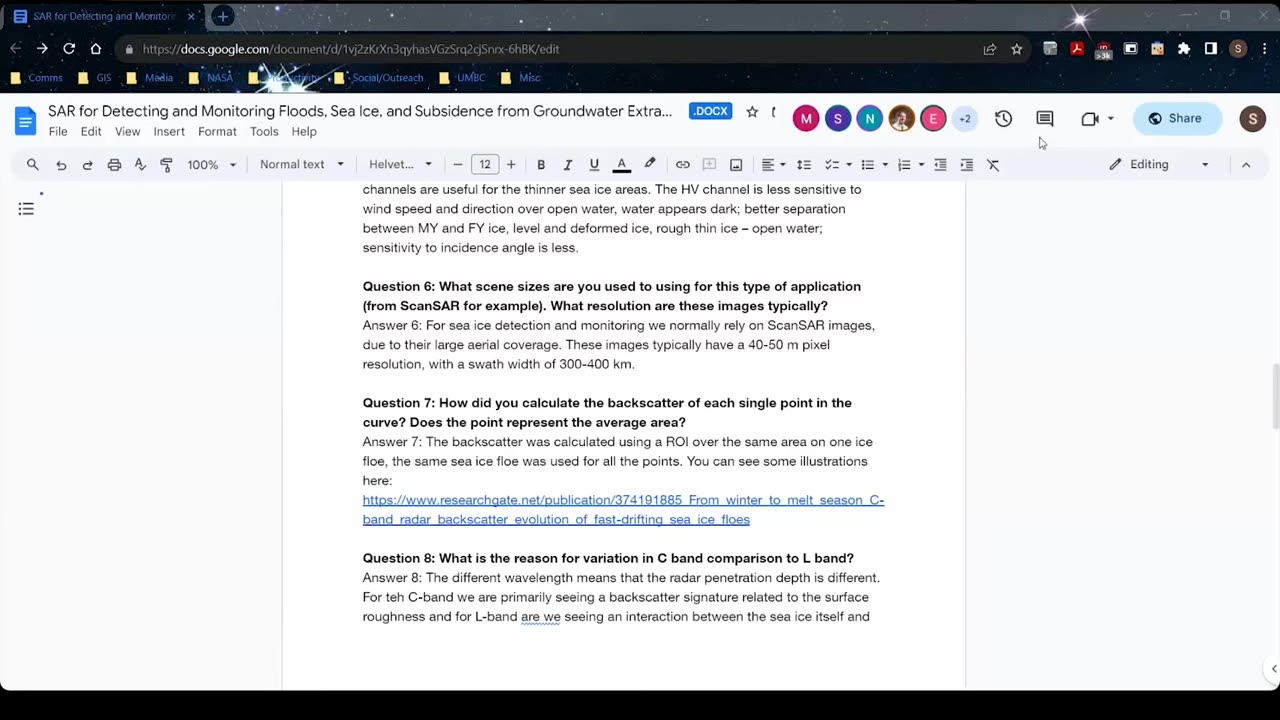Premium Only Content

NASA ARSET: Detecting and Monitoring Sea Ice with SAR, Part 1/3
SAR for Detecting and Monitoring Floods, Sea Ice, and Subsidence from Groundwater Extraction
Part 1: Detecting and Monitoring Sea Ice with SAR
Trainers: Erika Podest (JPL)
Guest Speakers: Malin Johansson (The Arctic University of Norway)
Over the past decade shipping traffic in the Arctic has expanded rapidly and as Arctic sea ice recedes due to climate change, an increased number of vessels with low ice-class are venturing into the region. One hazard that these ships face is striking sea ice and among the most serious hazards is becoming surrounded and stuck in sea ice. The pressure of the ice on the ship’s hull can cause severe structural damage, which can lead to oil spills. The entrapped ship can also drift towards shallower waters resulting in grounding, endangering its crew, passengers, or cargo. In addition, the loss of sea ice makes coastlines become vulnerable to bigger waves from storms, leading to accelerated erosion that impacts people and wildlife. Detecting and monitoring sea ice can help identify areas at risk for ships and also help inform on mitigation strategies along coastal areas in the Arctic. This session will provide a summary of the theory of SAR for detecting sea ice followed by a demo using SAR data with the SNAP Toolbox to generate maps of sea ice.
-
 LIVE
LIVE
Jewels Jones Live ®
1 day agoTRUMP SECURES BORDER | A Political Rendezvous - Ep. 113
2,422 watching -
 25:02
25:02
marcushouse
17 hours ago $31.97 earnedStarship Just Exploded 💥 What Went Wrong This Time?!
87.1K45 -
 12:00
12:00
Silver Dragons
22 hours agoBullion Dealer Reveals Best Silver to Buy With $1,000
41.5K7 -
 12:58
12:58
NinjaGamblers
8 hours ago $10.66 earnedIs This The BEST Way to Win At Roulette? 😲
67.8K4 -
 1:01:54
1:01:54
CharLee Simons Presents Do Not Talk
2 days agoCALIFORNIA'S DONE!
42.5K17 -
 7:33
7:33
MudandMunitions
1 day agoUnboxing My FIRST Revolver! Smith & Wesson 442 .38 Special and What’s Coming Next for the Channel
66.8K8 -
 1:01:05
1:01:05
Trumpet Daily
1 day ago $7.92 earnedGermany Started Two World Wars and Now Wants Nuclear Weapons - Trumpet Daily | Mar. 7, 2025
49.2K65 -
 57:07
57:07
Stephen Gardner
22 hours ago🚨BREAKING: Musk STUNS even Trump with LATEST FRAUD DISCOVERY!!
179K399 -
 2:26:47
2:26:47
FreshandFit
18 hours agoRatchet Chick Gets Kicked Out "Gracefully" For THIS...
175K191 -
 2:05:17
2:05:17
TimcastIRL
20 hours agoDemocrat ACTBLUE In CHAOS, Theories Over DOGE Cutting SLUSH FUND Go Wild w/Hotep Jesus | Timcast IRL
313K268